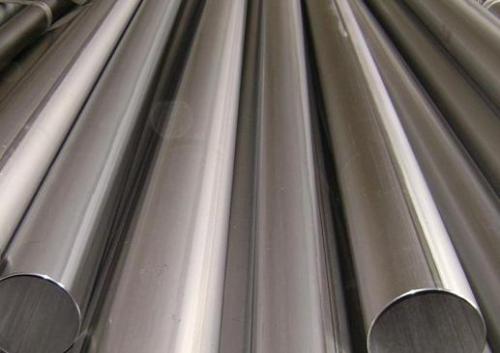 China has faced "double anti-dumping" investigations in Europe and the United States across multiple sectors, including solar energy and wind power. According to industry insiders, these sectors share similar competitive advantages with the steel industry but also suffer from varying degrees of overcapacity. The steel industry serves as a prime example: last year, China's steel exports surged by 14% year-on-year, while over the past three years, the compound annual growth rate of steel exports reached an impressive 33.96%. Meanwhile, the volume of imported steel products has been declining steadily, with a year-on-year drop of 12%.
In this context, early this year saw a wave of trade actions against Chinese steel products. In February alone, the European Union, the United States, and Australia launched three separate anti-dumping and countervailing duty investigations on seamless steel tubes and hot-rolled steel products. At the end of January, Canada also initiated a trade relief investigation targeting galvanized steel wire and hot-rolled steel plates from China.
Faced with these "double anti-dumping" measures, the domestic steel market has witnessed a sharp price increase not seen in years. Major steel producers such as Baosteel, Wuhan Iron & Steel, Shougang, and Angang have all announced price hikes in March, with some brands increasing prices by RMB 100 to 300 per ton. The export restrictions caused by these investigations could lead to a large influx of steel products back into the domestic market. Why are steel mills raising prices now?
"The rising cost is the main driver behind the price adjustments," said an industry researcher. Since the fourth quarter of last year, the price of imported iron ore, which had previously been on a downward trend, has started to climb rapidly. This has led to a steady rise in the prices of domestically produced fine iron ore, coking coal, metallurgical coke, and scrap metal. Steel traders noted that after the Spring Festival, the once quiet steel market experienced a strong rebound, with spot prices for rebar, wire rod, coils, cold-rolled sheets, and medium plates rising significantly. As the automotive and infrastructure sectors begin to recover, demand for steel products is showing early signs of improvement.
However, despite this recovery, the challenges facing the domestic steel industry this year remain significant. According to a recent release from the China Steel Association, both the total output of the steel industry and fixed asset investment have declined compared to the previous year. Yet, new production capacity in the ferrous metal smelting and rolling industry continues to expand, adding pressure to an already oversupplied market.
"Whether or not there are 'double anti-dumping' measures, cutting capacity, raising standards, and controlling production are all urgent issues," said an industry insider. In addition to managing overcapacity, it's crucial to boost the added value of domestic steel products. Some experts believe that reducing reliance on imported steel can help counter the current trade pressures. However, China still faces challenges in high-end steel production. To replace imported materials, increased investment in technology is essential.
China has faced "double anti-dumping" investigations in Europe and the United States across multiple sectors, including solar energy and wind power. According to industry insiders, these sectors share similar competitive advantages with the steel industry but also suffer from varying degrees of overcapacity. The steel industry serves as a prime example: last year, China's steel exports surged by 14% year-on-year, while over the past three years, the compound annual growth rate of steel exports reached an impressive 33.96%. Meanwhile, the volume of imported steel products has been declining steadily, with a year-on-year drop of 12%.
In this context, early this year saw a wave of trade actions against Chinese steel products. In February alone, the European Union, the United States, and Australia launched three separate anti-dumping and countervailing duty investigations on seamless steel tubes and hot-rolled steel products. At the end of January, Canada also initiated a trade relief investigation targeting galvanized steel wire and hot-rolled steel plates from China.
Faced with these "double anti-dumping" measures, the domestic steel market has witnessed a sharp price increase not seen in years. Major steel producers such as Baosteel, Wuhan Iron & Steel, Shougang, and Angang have all announced price hikes in March, with some brands increasing prices by RMB 100 to 300 per ton. The export restrictions caused by these investigations could lead to a large influx of steel products back into the domestic market. Why are steel mills raising prices now?
"The rising cost is the main driver behind the price adjustments," said an industry researcher. Since the fourth quarter of last year, the price of imported iron ore, which had previously been on a downward trend, has started to climb rapidly. This has led to a steady rise in the prices of domestically produced fine iron ore, coking coal, metallurgical coke, and scrap metal. Steel traders noted that after the Spring Festival, the once quiet steel market experienced a strong rebound, with spot prices for rebar, wire rod, coils, cold-rolled sheets, and medium plates rising significantly. As the automotive and infrastructure sectors begin to recover, demand for steel products is showing early signs of improvement.
However, despite this recovery, the challenges facing the domestic steel industry this year remain significant. According to a recent release from the China Steel Association, both the total output of the steel industry and fixed asset investment have declined compared to the previous year. Yet, new production capacity in the ferrous metal smelting and rolling industry continues to expand, adding pressure to an already oversupplied market.
"Whether or not there are 'double anti-dumping' measures, cutting capacity, raising standards, and controlling production are all urgent issues," said an industry insider. In addition to managing overcapacity, it's crucial to boost the added value of domestic steel products. Some experts believe that reducing reliance on imported steel can help counter the current trade pressures. However, China still faces challenges in high-end steel production. To replace imported materials, increased investment in technology is essential.ZHEJIANG KINGSIR VALVE CO., LTD. , https://www.cn-kingsir.com